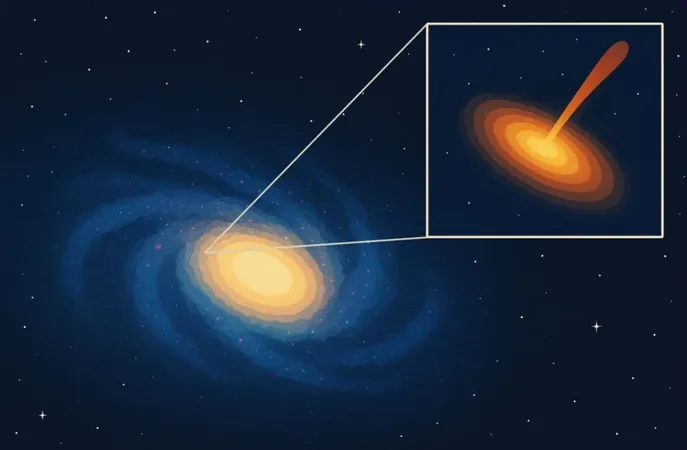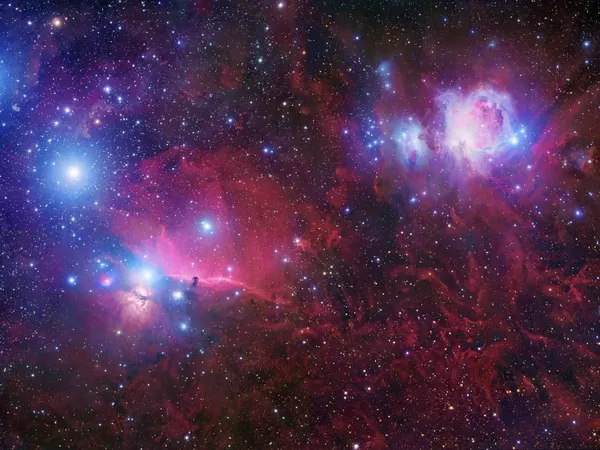
A Bold Discovery: Black Hole Spotted Wandering Away from Its Galactic Center!
2025-09-10
Author: Jia
An Unexpected Journey of a Black Hole
The mysteries of black holes continue to unravel, sparking excitement among astronomers. While we know that stellar mass black holes form from the remnants of massive stars, and that supermassive black holes anchor galaxies, two intriguing types—primordial and intermediate mass black holes—remain hypothetical and showcase the gaps in our understanding.
A Distant Dwarf Galaxy’s Surprising Find
In a groundbreaking study published in Science Bulletin, astronomers have identified an active galactic nucleus (AGN) in a distant dwarf galaxy, located a staggering 230 million light-years from Earth. What’s astonishing? This black hole is sitting 3,200 light-years away from its galaxy’s center!
An Off-Center AGN Challenging Our Beliefs
This stellar wanderer is not alone. Researchers, led by Yuanqi Liu from the Shanghai Astronomical Observatory, reveal that black holes can actively consume material and grow, even when distanced from the gas-rich centers we usually associate with them. This challenges the conventional notion that black holes thrive primarily in galactic centers, where gas reservoirs are plentiful.
Understanding the Dynamics of Dwarf Galaxies
Studying these dwarf galaxies is crucial. Their simpler formations allow for better preservation of the processes that shape their black holes. Because they are less massive, events like galaxy mergers can displace black holes from their centers. This discovery underscores the role of gravitational interactions in the evolution of these cosmic giants.
Mapping the Galaxy: A Rich Source of Knowledge
The findings stem from the Mapping Nearby Galaxies at Apache Point Observatory (MaNGA) survey, which is investigating around 10,000 galaxies. Out of the 628 identified dwarf galaxies with AGN candidates, approximately 62% are located away from their galactic centers—a significant revelation that could reshape our understanding of black hole formation and growth.
How Big is This Wandering Black Hole?
The black hole in question, situated in the galaxy designated MaNGA 12772-12704, is estimated to have about 300,000 solar masses. This puts it within the elusive realm of intermediate mass black holes—if they indeed exist.
Implications for Black Hole Evolution
This research is compelling scientists to rethink the co-evolution of black holes and galaxies. Tao An, a co-author of the study, emphasizes that black holes are not just central engines but may also exert influence from the outskirts, reshaping their host galaxies.
A Shift in Galactic Understanding
The implications could be profound, especially regarding the formation of supermassive black holes in the early Universe. Traditional models that imply black holes efficiently and steadily grow by funneling gas into their centers may need a revision. The chaotic, gas-rich environments of early galaxies suggest a different growth trajectory for these massive entities.
Expanding the Horizons on AGN Feedback
Moreover, the study raises questions about AGN feedback—how these black holes interact with their host galaxies. The findings suggest that even displaced massive black holes can trigger significant star formation and gas dynamics, broadening our comprehension of AGN physics.
A New Frontier Awaits
As we steer into this uncharted territory, the discovery of wandering black holes moves from the realm of speculation to a reality backed by observation. With advancements in telescope technology, astronomers are poised to uncover even more of these cosmic nomads, further enriching our understanding of the universe's alluring mysteries.


 Brasil (PT)
Brasil (PT)
 Canada (EN)
Canada (EN)
 Chile (ES)
Chile (ES)
 Česko (CS)
Česko (CS)
 대한민국 (KO)
대한민국 (KO)
 España (ES)
España (ES)
 France (FR)
France (FR)
 Hong Kong (EN)
Hong Kong (EN)
 Italia (IT)
Italia (IT)
 日本 (JA)
日本 (JA)
 Magyarország (HU)
Magyarország (HU)
 Norge (NO)
Norge (NO)
 Polska (PL)
Polska (PL)
 Schweiz (DE)
Schweiz (DE)
 Singapore (EN)
Singapore (EN)
 Sverige (SV)
Sverige (SV)
 Suomi (FI)
Suomi (FI)
 Türkiye (TR)
Türkiye (TR)
 الإمارات العربية المتحدة (AR)
الإمارات العربية المتحدة (AR)